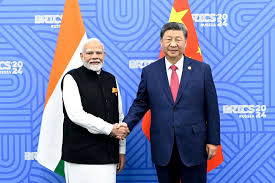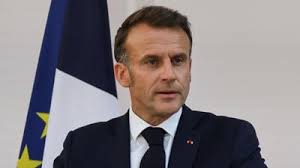After five years of strained relations, the long-awaited thaw between India and China has begun, as India lifts its ban on Chinese tourists. This positive move marks a new chapter in the diplomatic ties between the two neighboring giants, both of which are among the world’s most populous countries.
From July 24, 2025, Chinese nationals will be allowed to apply for tourist visas to India, a significant shift in relations that had been deeply affected by the deadly border clash in Galwan Valley in June 2020. This border confrontation, which resulted in the deaths of at least 20 Indian and four Chinese soldiers, triggered a breakdown in the diplomatic relationship, halting many forms of bilateral exchange, including tourism.
In a statement, China’s foreign spokesperson Guo Jiakun hailed the move as “positive news,” emphasizing that both countries share common interests in improving people-to-people exchanges. He further stated that China is willing to continue discussions with India to enhance travel facilitation between the nations.
The decision follows a series of diplomatic steps to mend ties. For instance, China had already lifted restrictions for Indian nationals in March, signaling a willingness to resume more open exchanges. Indian tourism professionals are optimistic about the renewed connections. Sarvjeet Sankrit, founder of the Delhi-based travel agency Ghum India Ghum, shared that many Chinese tourists visited India before the visa freeze and are expected to return, boosting the country’s tourism sector.
For many individuals, the resumption of tourist visas means more than just business—it is an opportunity to reunite with loved ones and explore new cultural exchanges. **Kate Hu**, a Chinese national whose boyfriend is from India, expressed her excitement at being able to visit her partner’s family after years of waiting. “I had to cancel my trip earlier due to the visa freeze, and I’m glad I don’t have to get married just for a visa anymore,” she joked, reflecting the personal impact of the decision.
India’s lifting of restrictions is seen as a major boon for local businesses. Hotel owners, tour guides, and vehicle operators in major cities like Delhi, which once relied on Chinese tourism, are now preparing for a surge of visitors. Many believe this will help revive the Indian tourism sector, which has struggled since the pandemic.
The resumption of tourist visas comes on the heels of other diplomatic developments. In January 2025, India and China agreed to resume direct commercial flights, and Beijing recently reopened Mount Kailash and Ladakh Manasarovar in Tibet to Indian pilgrims. These are sacred sites for many Hindus and Buddhists, and their reopening is symbolic of the ongoing effort to stabilize and strengthen bilateral ties.
In a recent meeting in Beijing, Indian Foreign Minister S. Jaishankar and his Chinese counterpart Wang Yi noted the progress made in rebuilding relations. They emphasized the importance of people-to-people engagement, which is seen as essential for long-term peace and cooperation.
While many view the decision as a sign of growing cooperation, there is still skepticism about how this will affect public opinion in both countries. Harsh V. Pant, the foreign policy expert at the **Observer Research Foundation, noted that while the normalization is encouraging, “India faces a unique challenge in managing its relationship with China.”
Despite historical tensions, there is a growing recognition of mutual benefits, particularly in the economic sphere. India and China, both global economic powers, have significant trade ties, and experts suggest that building on these commercial relationships could pave the way for broader cooperation. Saurabhi Singh, a Delhi-based teacher, noted, “Despite the past wars and disagreements, the people of India and China share many connections—from labor to markets and mutual admiration for food and culture.”
As both countries work to rebuild diplomatic ties, the resumption of tourist visas could be a vital step in furthering understanding and fostering deeper connections. Pradeep K, a consultant in Delhi, stated, “People-to-people interaction is essential for long-term peace.” He remains hopeful that such diplomatic shifts might change mindsets, bringing people closer, and bridging divides that have lasted decades.
With tourism now back on the agenda between India and China, the coming months will show whether this symbolic gesture marks the beginning of a new era of cooperation or simply a temporary diplomatic reset.



